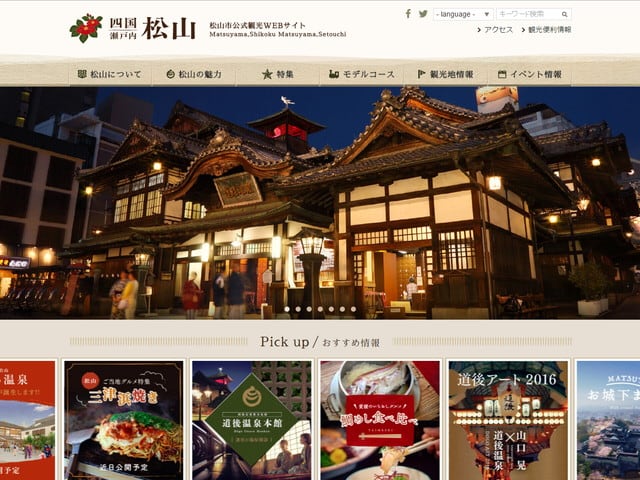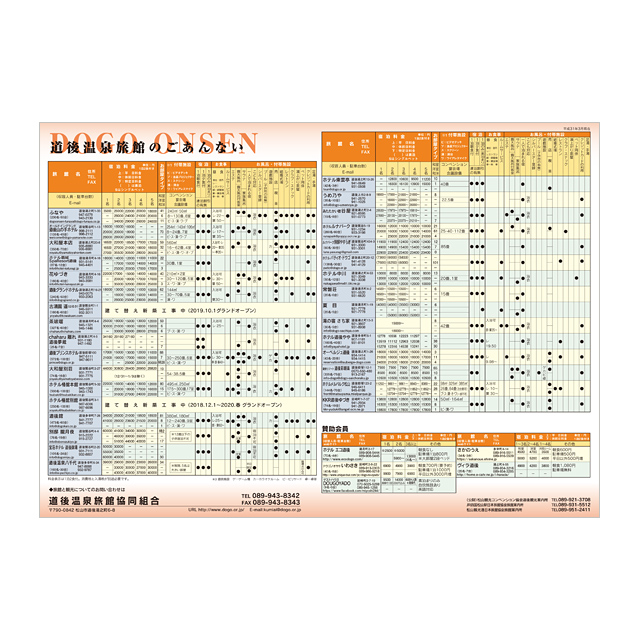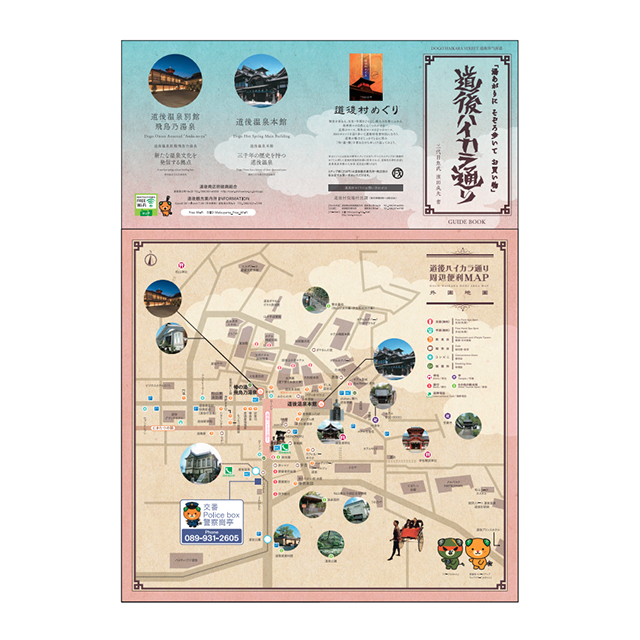
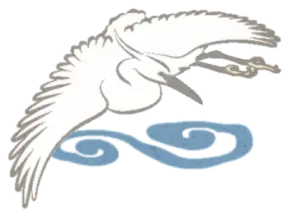
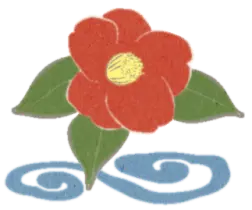

-
Dōgo Onsen Honkan+
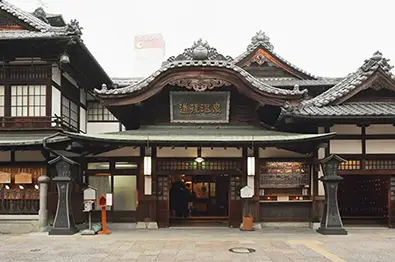
-
Asuka-no-Yu+
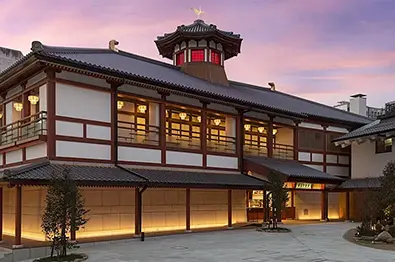
-
Tsubaki-no-Yu+
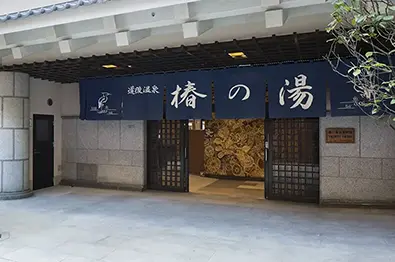
Tourist information
Dogo Onsen Front Page > Tourist information
Tourist spots in the Dogo Onsen area
Use QR codes on your walking tour
The Dogo Onsen area offers walking course and tourist information using QR codes.
Be sure to take advantage of MATSUYAMA FREE Wi-Fi, available near the signs.
Signs in the Dogo Onsen area
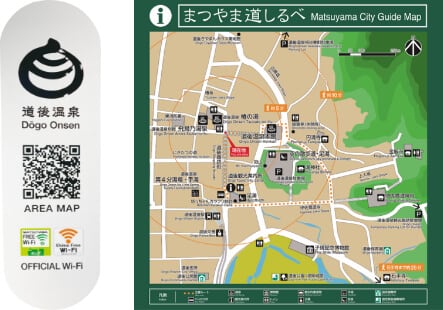
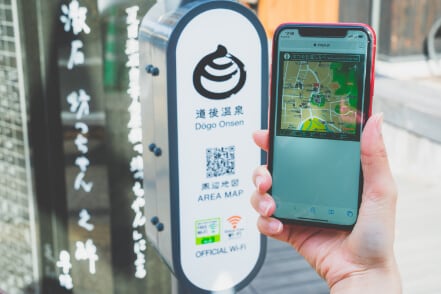
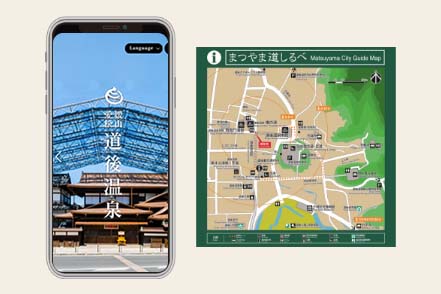
Sora-no-Sanpomichi(sky promenade & footbath)
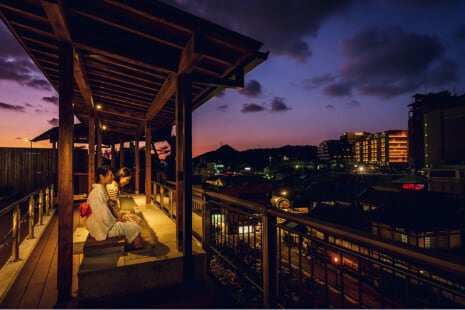
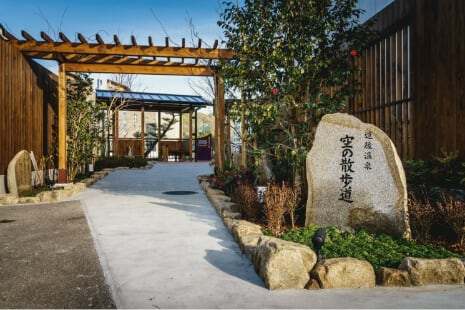
Sora-no-Sanpomichi is an observation promenade atop Mt. Kanmuriyama on the south side of Dogo Onsen Honkan. It commands a gorgeous view of Dogo Onsen Honkan below and across the town of Dogo. Along with the arbors and benches, it has a footbath with hot spring water flowing directly from the source, allowing visitors to enjoy the view while relaxing. To make it more inviting, there is a changing room as well. The garden, with its wisteria trellis, cherry blossoms in spring, hydrangea in summer, colored leaves in autumn, and camellias in winter, is also a big treat, in all seasons. Lights come on at night to create a romantic atmosphere.
| Location | 4-30 Dogo-yunomachi, Matsuyama City |
|---|---|
| Access | 10-minute walk from Dogo Onsen Station |
| Hours | Footbath open 6:00 a.m. to 9:00 p.m. |
| Closed | Open year-round (footbath temporarily closed for one day in December) |
| Admission | Free |
Dogo Onsen No. 4 Hot Spring Supply Facility and Handbath
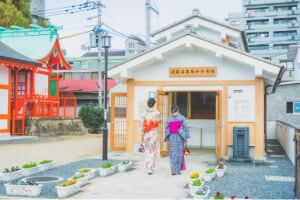

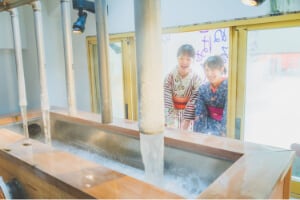
Dogo Onsen has 18 hot spring sources. The pumped water is collected in what is called a hot spring supply facility. Hot water of varied temperatures is blended and adjusted so that it stays at a constant temperature. It is then sent to public bathhouses such as the Dogo Onsen Honkan, as well as hotels. A characteristic of Dogo Onsen is the hot spring water direct from the source with no reheating or added water. Dogo Onsen has four hot spring supply facilities, but the No. 4 Hot Spring Supply Facility is the only place where visitors can observe how the water is collected and enjoy the feel of the freshly pumped hot spring water in the handbath.
| Location | 7-28 Dogo-yunomachi, Matsuyama City (northeast of Dogo Onsen Station) |
|---|---|
| Access | 1-minute walk from Dogo Onsen Station |
| Hours | 9:00 a.m. to 8:00 p.m. (handbath may be used 24 hours) |
| Closed | Open year-round (observation room temporarily closed for one day in December) |
| Admission | Free |
Botchan Karakuri Clock
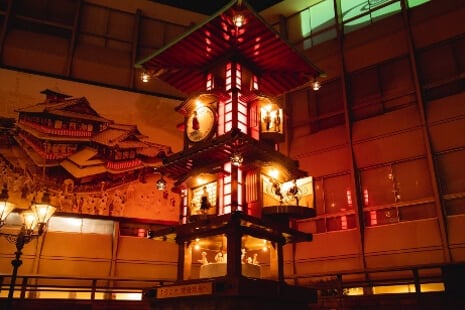
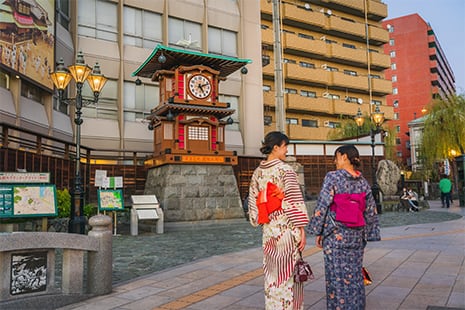
This clock was erected in 1994 to commemorate the 100th anniversary of the completion of the Dogo Onsen Honkan, using the Shinrokaku of the Honkan for its design. What makes this clock, which can be seen as soon as visitors get off the tram at Dogo Onsen Station so popular is the karakuri mechanism. When the designed time comes, the lights turn on and the clock rises to the sound of taiko drums. Then characters from Natsume Soseki’s novel Botchan appear from inside to tell their story. Finally, the local beauty, Madonna, appears, saying a few words of welcome to everyone in Dogo.
| Location | Dogo-yunomachi, Matsuyama City |
|---|---|
| Access | A few steps from Dogo Onsen Station |
| Performance time | The figures come to life every hour between 8:00 a.m. and 10:00 p.m. and every half hour on weekends, holidays, and peak tourist seasons. |
Hojo-en Plaza and Footbath

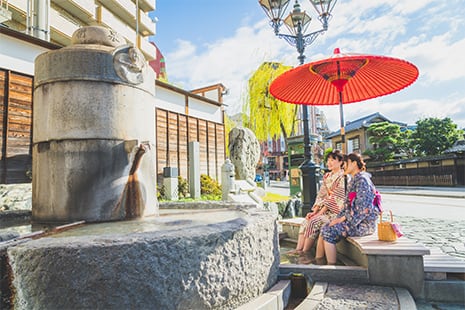
Next to the Botchan Karakuri clock, there is a footbath that flows directly from the hot spring source. This area got the name Hojo-en because there was once a pond here known as a hojo-chi, where captured fish were released as part of Buddhist practices. The yugama used as a waterspout had been used at Dogo Onsen’s Yojo-no yu (present south wing of the Honkan). There is also a small changing room (free of charge) to remove stockings and other items so everyone can enjoy the footbath.
| Location | Dogo-yunomachi, Matsuyama City |
|---|---|
| Access | A few steps from Dogo Onsen Station |
| Hours | 6:00 a.m. to 11:00 p.m. |
| Closed | Open year-round |
| Admission | Free |
The Shiki Museum
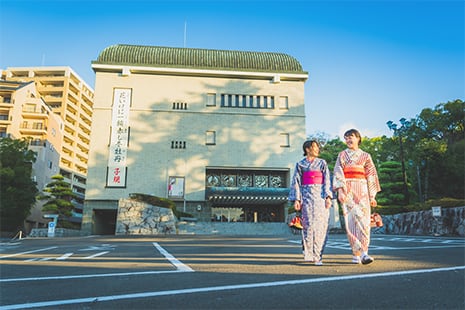
Offering an in-depth literary experience, the Shiki Museum highlights the life of Masaoka Shiki, a poet from Matsuyama. Shiki developed the original haiku and tanka theory, making great achievements in the world of Japanese literature until his death at the young age of 34. Here, Shiki’s world view is on display in an easy-to-follow manner using panels and videos, with a light shown on his circle of friends. Instructor guides (free of charge) and multilingual audio guides (100 yen per unit) are also available.
| Location | 1-30 Dogo-koen Park, Matsuyama City |
|---|---|
| Access | 5-minute walk from Dogo Onsen Station |
| Hours | 9:00 a.m. to 5:00 p.m. (9:00-6:00 from May to October) |
| Closed | Tuesday (the following day when Tuesday is a national holiday) |
| Admission | 400 yen to view permanent exhibition |
| Detailed information | http://sikihaku.lesp.co.jp/ |
Himitsu-ja-nai Base
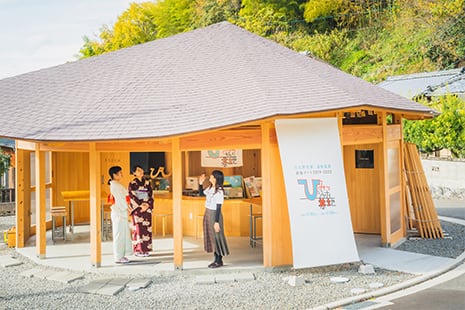
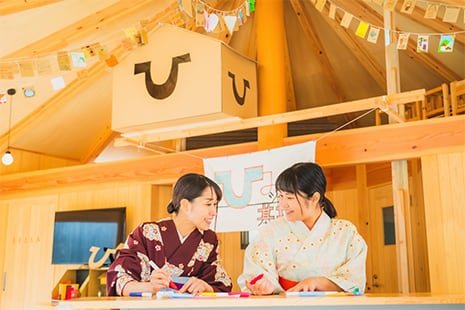
The interaction center Himitsu-ja-nai Base is a work of art that was made for Dogo Art 2019/2020. Located at the top of Shoninzaka slope on the east side of Dogo Onsen Honkan, it is designed with the graceful, curved roof of temples and shrines as its motif. Himitsu-ja-nai Base provides information about art that can be found all around Dogo as well as tourist information. Visitors are invited to experience creating simple art (free of charge) and to enjoy gallery exhibitions.
| Location | 2-41 Dogo Yuzuki-cho, Matsuyama City |
|---|---|
| Access | 9-minute walk from Dogo Onsen Station |
| Hours | 11:00 a.m. to 5:00 p.m. |
| Closed | Monday to Thursday (subject to temporary closures) |
| Admission | Free |
Dogo-Koen Park (Yuzuki Castle Ruins)
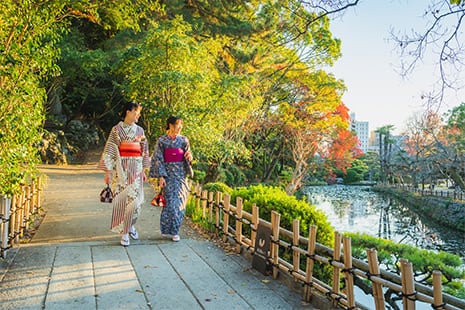
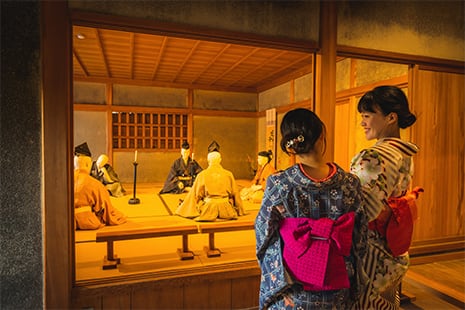
Dogo-Koen Park is a well-maintained national historic site built on the ruins of Yuzuki castle, which was home to the powerful Kono family of Iyo in medieval times. They have been selected as one of Japan’s Top 100 Historical Parks and one of Japan’s Top 100 Castles. Cherry blossoms are beautiful in spring, water lilies in summer, colored leaves in autumn, and camellias in winter. It is a perfect spot all year round to take in the four seasons and nature in Japan while walking around and listening to the chirping of the birds. The park also has an observatory with a panoramic view of the city and an open space with playground equipment, making it popular among families. Taking a walk or jogging along the streets that once wound through the residential part of the castle grounds is also recommended. Feel the history and culture of the Dogo area in the museum with exhibits of excavated items and a restored buke yashiki (samurai residence).
| Location | Dogo-Koen Park, Matsuyama City |
|---|---|
| Access | 1-minute walk from Dogo Onsen Station |
| Hours | Museum and buke yashiki (samurai residence) 9:00 a.m. to 5:00 p.m. |
| Closed | Museum and buke yashiki on Mondays (the following day when Monday is a national holiday) |
| Admission | Free |
| Detailed information | www.dogokouen.jp |
Enman-ji Temple

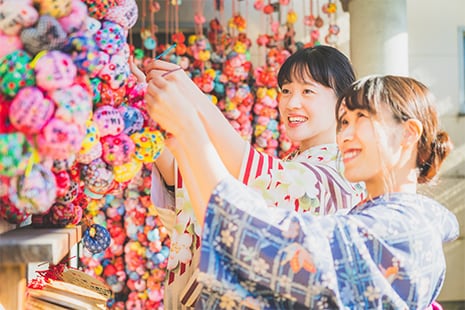
Enshrined in front of the main hall, which is said to have been built in the early 9th century, is the Yu-no-daijizo-son, standing at a height of 1-jo 12-shaku (about 3.64 meters). Yu-no-daijizo (lit. grand guardian deity of hot water) is a protector against fires (Hiyoke-jizo) who keeps the people of Dogo safe, and is also known as Enmei-jizo, who conveys longevity. Enman-ji Temple is popular as a “power spot” for successful romance and offers lucky charms such as Ematama and Haiku-koi-mikuji for writing wishes in haiku. The colorful Omusubidama (cloth balls) are a welcome photo opportunity.
| Location | 4-49 Dogo Yuzuki-cho, Matsuyama City |
|---|---|
| Access | 8-minute walk from Dogo Onsen Station |
| Hours | 8:00 a.m. to 6:00 p.m. |
Hogon-ji Temple
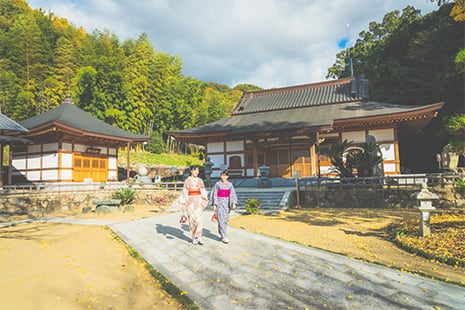
Hogon-ji Temple, founded in the 4th year of the reign of Emperor Tenji (665), is known as the birthplace of the Kamakura period monk Ippen Shonin, founder of the Jishū sect of Buddhism. Ippen Shonin, originally a member of the clan of domain lord Kono, became a priest and headed out on a journey to spread the teachings of Buddhism and distribute paper talismans. His odori-nembutsu (dancing while chanting Amida Buddha’s name) is said to be the origin of the Bon-odori Dance. The national important cultural property Wooden Statue of Ippen Shonin, depicting Ippen during his religious travels, was destroyed in a fire in 2013 but rebuilt in 2016, along with the Ippen Shonin-do Hall. The temple has a quiet atmosphere and is a popular place to watch the sunset away from the crowds. The golden leaves of the large gingko trees are an autumn attraction.
| Location | 5-4 Dogo Yuzuki-cho, Matsuyama City |
|---|---|
| Access | 9-minute walk from Dogo Onsen Station |
| Hours | Main Hall and Ippen Shonin-do are open 9:00 a.m. to 5:00 p.m. |
Isaniwa-jinja Shrine
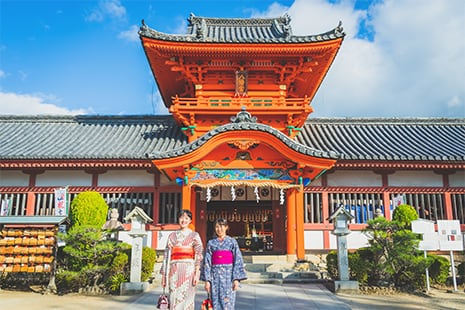
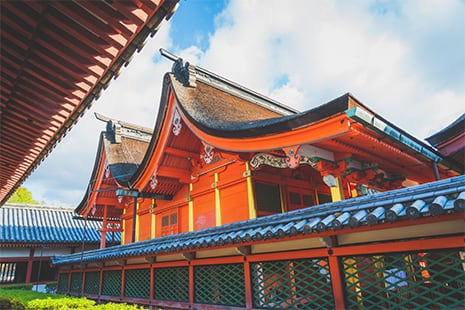
It is not known when the shrine was founded, but it is mentioned in writings of the Engi period (901-923) and has attracted worshipers for over 1,000 years. The current main sanctuary, beautifully painted in bright vermillion with numerous decorations, was rebuilt in 1667 (Kanbun 7) by the lord of the Matsuyama domain in appreciation of his prayers being fulfilled. It is one of Japan’s three complete examples of Hachimanzukuri architecture, along with Usa Hachiman-gū Shrine in oita and Iwashimizu Hachiman-gū shrine in Kyoto, and it is a designated important cultural property of Japan. The building stands at the top of a long 135-step stone staircase, overlooking the town of Dogo and Matsuyama-jo Castle.
| Location | 173 Sakuradani-cho, Matsuyama City |
|---|---|
| Access | 5-minute walk from Dogo Onsen Station |
| Hours | 6:00 a.m. to 6:00 p.m. (longer in the summer) |
How to use MATSUYAMA FREE Wi-Fi
MATSUYAMA FREE Wi-Fi
SSID:Matsuyama_Free Wi-Fi
*Register your e-mail address when connecting for the first time only.
*There is a 60-minute limit per connection. (Connect as many times as you like.)
First time
1) Select SSID Matsuyama_Free Wi-Fi on your device near a MATSUYAMA FREE Wi-Fi Logo sticker.
2) Select Connect to Internet on your portal screen.
3) Enter your email address and select Register.
4) Select Agree on the security level.
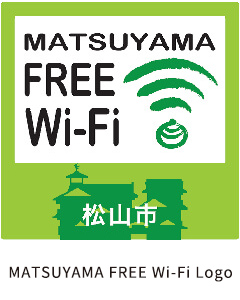
Second time onward
1) Select Connect to Internet on your portal screen.
2) Select Agree on the security level. (No need to enter your email address)
Lactation Room for Visitors
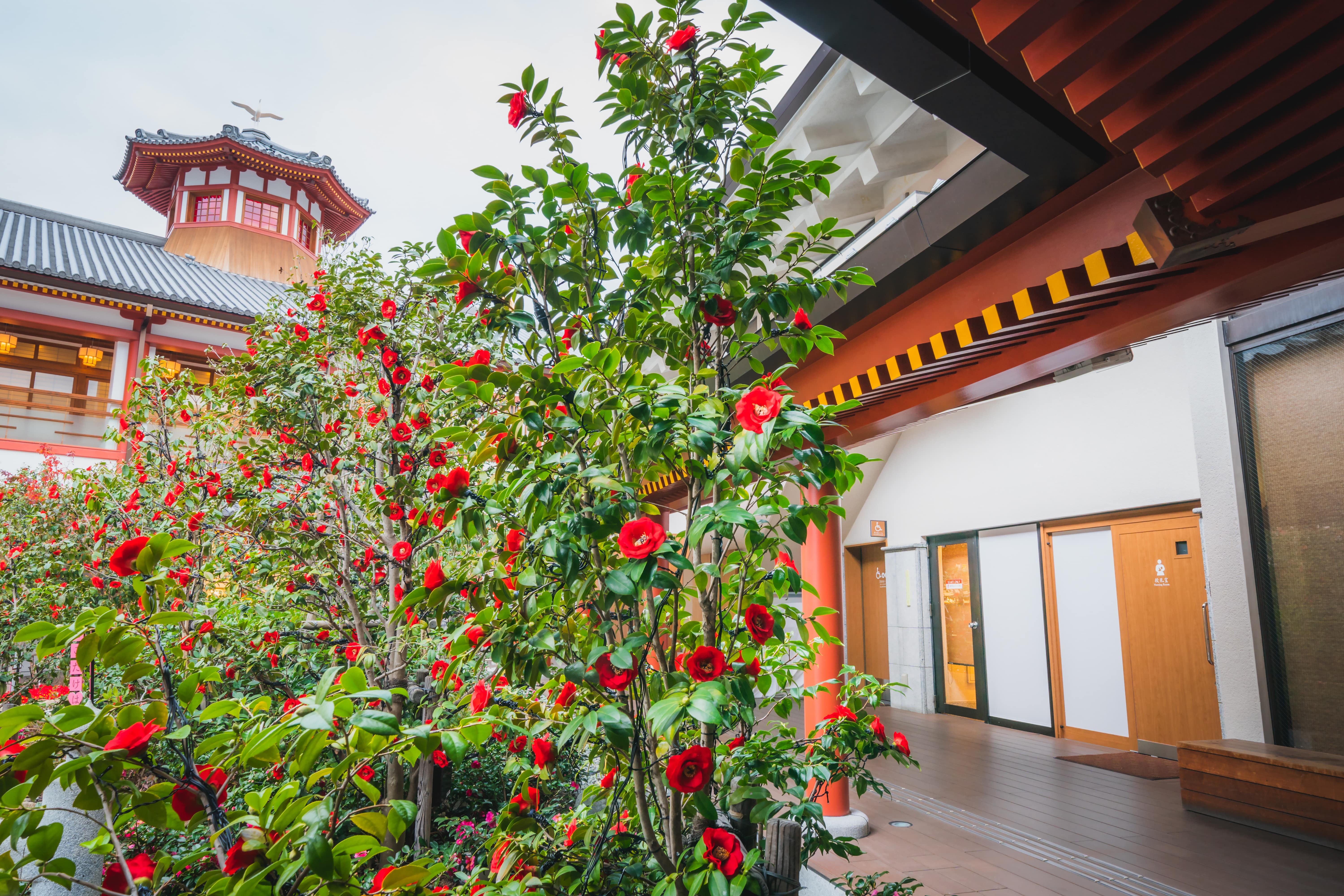
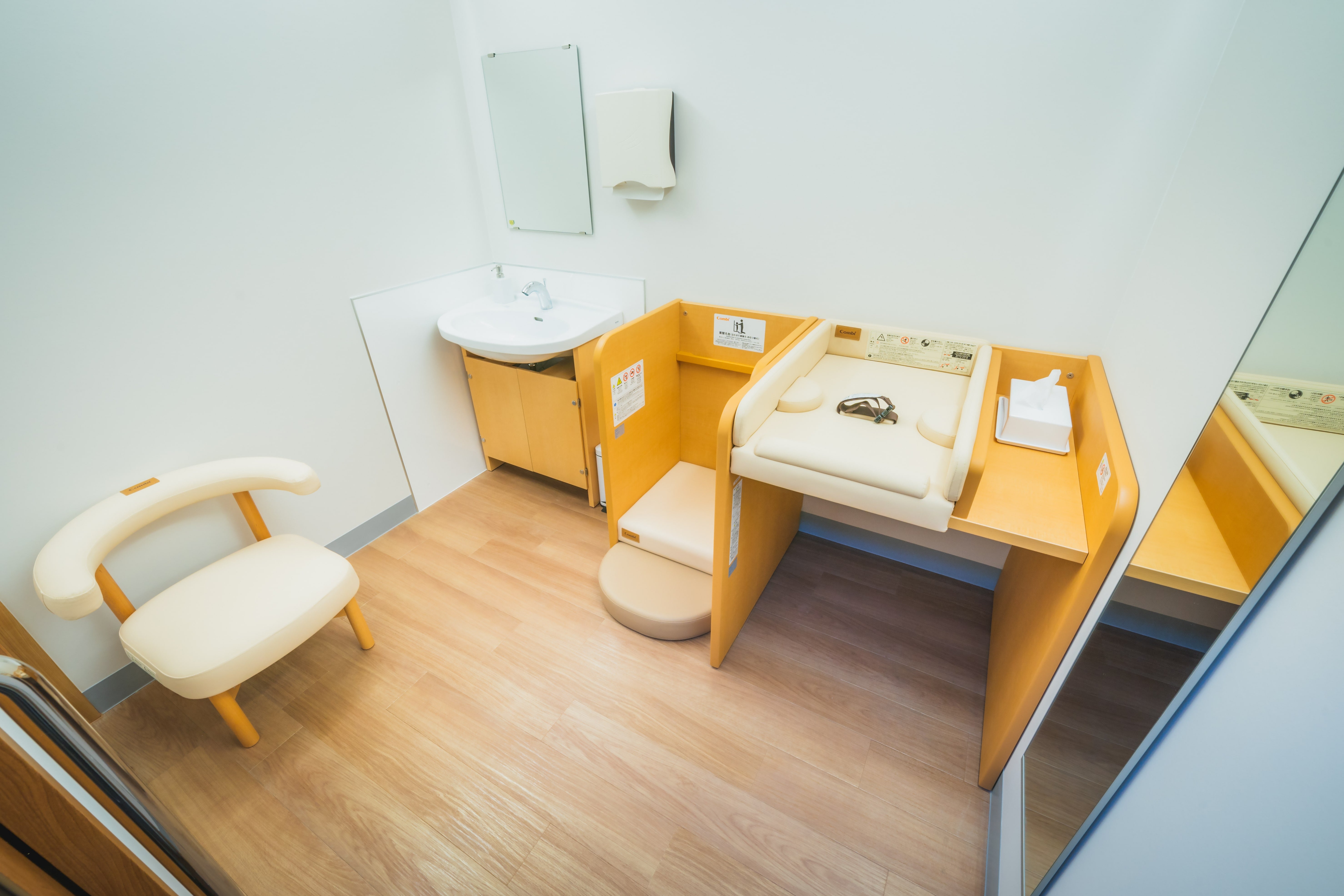
If you wish to use the facility, please press the intercom and management will unlock it for you.
For your security and peace of mind, the room is equipped with a sanitizing solution and is disinfected after each use.
| Available | Every day from 6:00 a.m. to 11:00 p.m. |
|---|---|
| Location | Dogo Onsen Tsubaki-no-Yu (19-22 Dogo-yunomachi, Matsuyama City) *You can also enter through the courtyard (corridor) between Tsubaki-no-Yu and Asuka-no-Yu. |
| Amenities | 1 diaper changing bed, 1 diaper changing cubicle (standing type), 1 nursing chair, sink |









